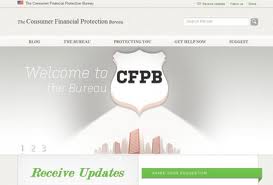In the aftermath of the financial crisis, Congress passed the Dodd-Frank Wall Street Reform and Consumer Protection Act. The new Act instituted the most comprehensive changes to the financial system since the 1930’s.
One of the major objectives of the new Act was to protect consumers from abusive practices by the financial industry. To accomplish this goal, the Dodd-Frank Act established a new agency know as the Consumer Financial Protection Bureau (CFPB).
The CFPB was granted broad powers to develop new regulations and enforce consumer protection laws in virtually every aspect of consumer finance. One of the new Bureau’s basic missions is to provide consumers with the information necessary to fully understand any financial arrangement entered into. 
The most complicated and confusing financial product for most consumers is mortgage financing. Besides receiving numerous disclosures after applying for a mortgage, the borrower is confronted with a mountain of paperwork at closing that require numerous signatures. Most borrowers do not even attempt to read through all the documents and instead, rely on the trust of their mortgage company and/or closing attorney. Needless to say, many of the abusive mortgages written by subprime lenders and banks would probably never have been accepted by most borrowers if they fully understood the costs and terms of the mortgage documents that they were signing.
FHA mortgage financing tends to be more confusing to consumers than conforming mortgages due to the presence of upfront mortgage insurance, monthly mortgage insurance charges, seller concessions and complex underwriting guidelines.
Due to the complexities of disclosures and the mortgage closing process, the new Consumer Financial Protection Bureau has made it a priority to simply consumer disclosures related to mortgage financing. Currently, mortgage applicants who apply for financing receive a three page Good Faith Estimate and a two page Truth in Lending form. Anyone who has ever examined these forms knows that there is a voluminous amount of numbers and technical terms on the forms which are incomprehensible to the average consumer. Asking your mortgage lending to explain the forms to you can also be an exercise in frustration unless you comprehend the terms used on the forms and are really good at math.
The CFPB is in the process of changing the disclosure forms to reduce technical terms and information overload. The crucial information that an FHA borrower needs to know revolves around hidden risks and loan costs. The plan of the CFPB is to combine the Good Faith Estimate and the Truth in Lending forms into one simple form that is easy to understand.
Another area that the CFPB plans to focus on is promoting financial education so that the consumer can make a sound long term financial decision. The CFPB is still in the planning stages on many of their projects to educate and protect consumers in financial matters. One area that the CFPB will hopefully focus on is to provide potential home buyers with an in depth analysis of the benefits and risks of home ownership.
The consumer is not likely to receive unbiased information from either their real estate agent or mortgage lender since both have a vested financial interest in closing a sale and approving a mortgage loan. Without a sound understanding of the cost and risks involved in owning a home, a consumer is at risk of finding out the hard way that he or she was not financial prepared to own a home.
Many FHA mortgage borrowers are approved for loans with relatively high debt ratios and minimal financial reserves. This puts borrowers at great risk if sudden unexpected home repairs come up or if income is suddenly reduced. Hopefully, the new CFPB will provide assistance to potential new home buyers to fully examine the risks of home ownership.